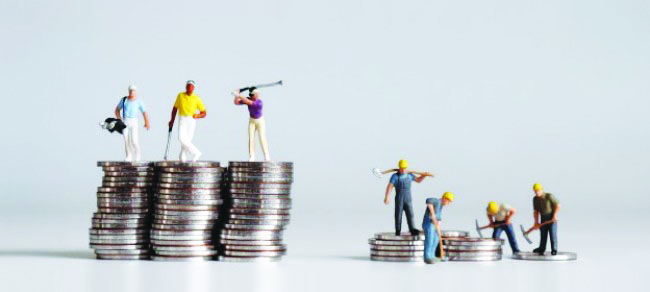COVID-19: A Turning Point for Inequality?
April 27, 2020960 views0 comments
By Benjamin Kessler
The pandemic calls into question the economic trends of the last four decades.
Question: What do Comoros, Micronesia, Tajikistan and Tuvalu have in common? Answer: They are among the very few – 18, to be exact – countries with no officially reported cases of the novel coronavirus (as of this writing).
Indeed, one would have to reach far back in living memory to find an event whose global reach matches that of the COVID-19 pandemic. However, although its grip enfolds virtually the entire world, the pressure is not evenly distributed among all people and places.
“The probability of catching COVID-19, if exposed, might be equal,” said Mark Stabile, the Stone Chaired Professor of Wealth Inequality and Professor of Economics at INSEAD, during a recent webinar in the Navigating the Turbulence of COVID-19 series. “But the probability of exposure surely is not equal.”
COVID-19 and inequality
In wealthier contexts, the risk falls disproportionately on the shoulders of “essential” workers – grocery store employees, nurses, delivery people, etc. – whose modest wages belie their importance to the larger project of surviving the pandemic. Moreover, while white-collar workers have shifted their mainly sedentary jobs to home offices, the occupations most resistant to remote working (e.g. construction, transportation, agriculture) are solidly working-class.
Making matters yet worse for society’s less lucky, soaring unemployment owing to COVID-19 has likely spared many of the top one percent of income earners, although the data on claimants have yet to be published.
“The decision to work from home or whether to work at all is not equally available,” Stabile said. “The ability to manage in an induced economic shutdown is not equal. So, although we are all in it together in some sense, I think we are experiencing this quite differently.”
Most dire of all are the possible health implications linking inequality and COVID-19. People with chronic health conditions such as diabetes, hypertension and cardiovascular disease are at especially high risk of severe illness, even death, if they come down with the virus. Stabile shared data from Canada showing that the bottom 20 percent on the income ladder were 15 percentage points more likely to suffer from these conditions.
In short, economic trends over the last four decades are paying off brutally for those on the business end of advancing inequality.
Public policy interventions
We are still in the early stages of this crisis. Already, though, governments are developing different strategies for protecting the most economically vulnerable.
One approach – adopted by Denmark, France and Canada among others – prioritises employment. For example, the French government is spending 45 billion euros to keep companies afloat. These countries hope that preventing the shedding of jobs in the short term will help the economy bounce back faster in the wake of COVID-19.
However, employer-centred interventions cannot reach people who were unemployed to begin with, or are eking out a tenuous living on the lower rungs of the gig economy. Indiscriminate one-time payments, such as the US’s controversial US$1200 COVID-19 relief checks for Americans earning less than six figures, could benefit this segment of society. Determining an appropriate amount is no simple task, however. “Sending out US$1200 for someone who has nothing left, and a family to feed, and rent to pay [is one thing]”, Stabile said. “It may not be necessary for someone who is working from home and is not at a point of financial catastrophe yet.”
A more systematic adoption of universal basic income (UBI) may ultimately help societies crisis-proof their economies in years to come, but would deliver support too slowly to cushion the COVID-19 blow. UBI programmes are usually means-tested and thus dependent on assessments of needs that occur once a year at tax filing time. The hardest-hit among us require much more timely action.
“Huge programmes responding very quickly, that’s a challenging ask of any government, no matter how efficient,” Stabile said.
A collective call to action
Still, Stabile is optimistic that recovery, albeit a slow one, is on the horizon. It will materialise out of a collective effort waged by governments, businesses and the most fortunate members of society.
“The biggest thing that business should be doing right now is making sure that, in some way, they are staying connected with their workforce, hopefully keeping them employed with the help of government if that’s possible,” he said.
Stabile also suggested that the wealthiest one percent, who have benefited enormously from the inequities in the current system, will be called upon to do their bit to shore up government deficits incurred by massive government relief programmes.
Once all is said and done, the necessarily egalitarian nature of the rescue effort may produce economic changes in developed nations that rival the post-World War II creation of the modern welfare state.
“It wasn’t just a destruction,” Stabile said of that era. “It was what we did after the destruction that was most important for what produced the period we have afterwards. We will have opportunities to have that conversation again.”
INSEAD’s webinar series “Navigating the Turbulence of COVID-19” feature expert inputs on key issues surrounding pandemic control and current countermeasures around the world. Join them here.

